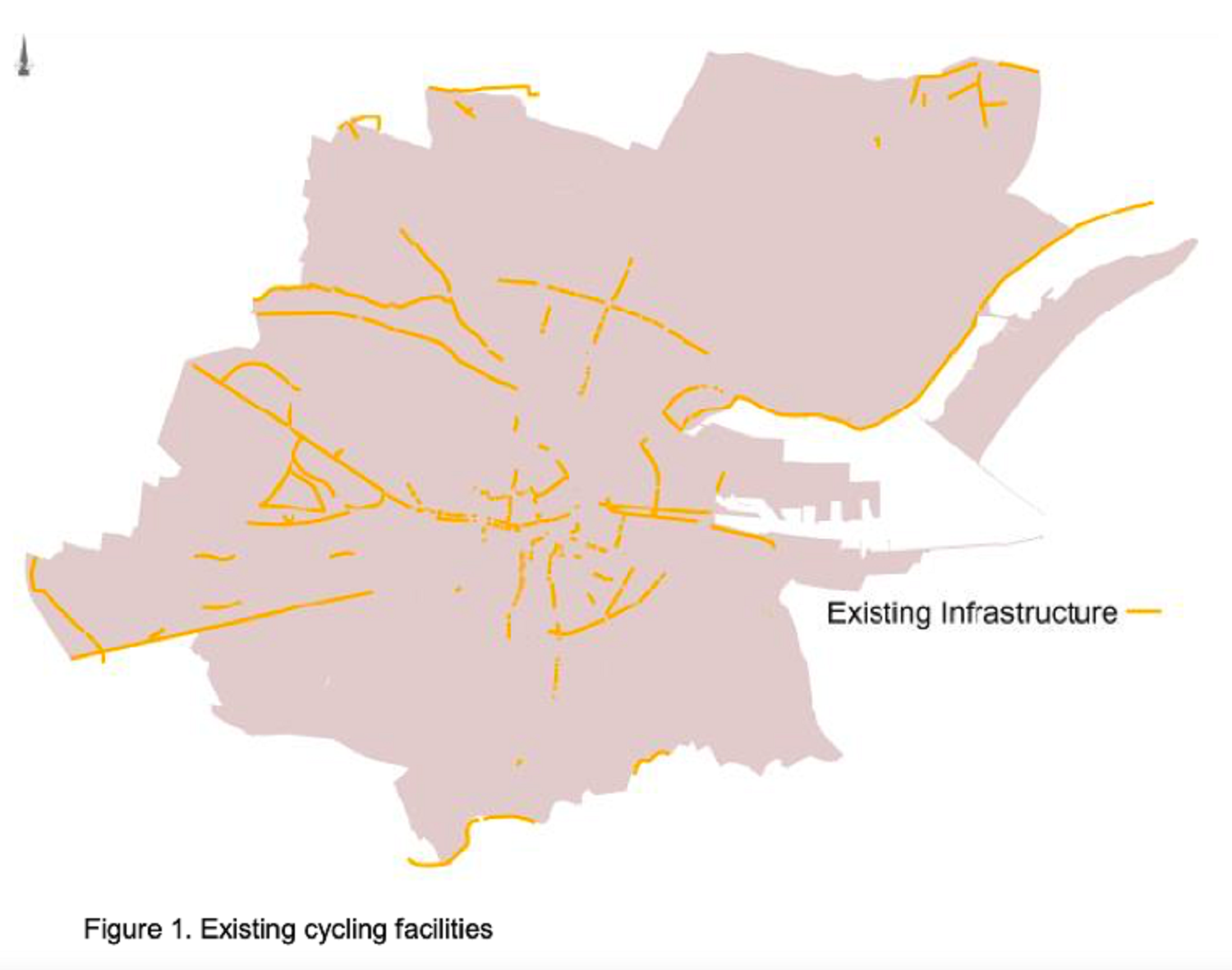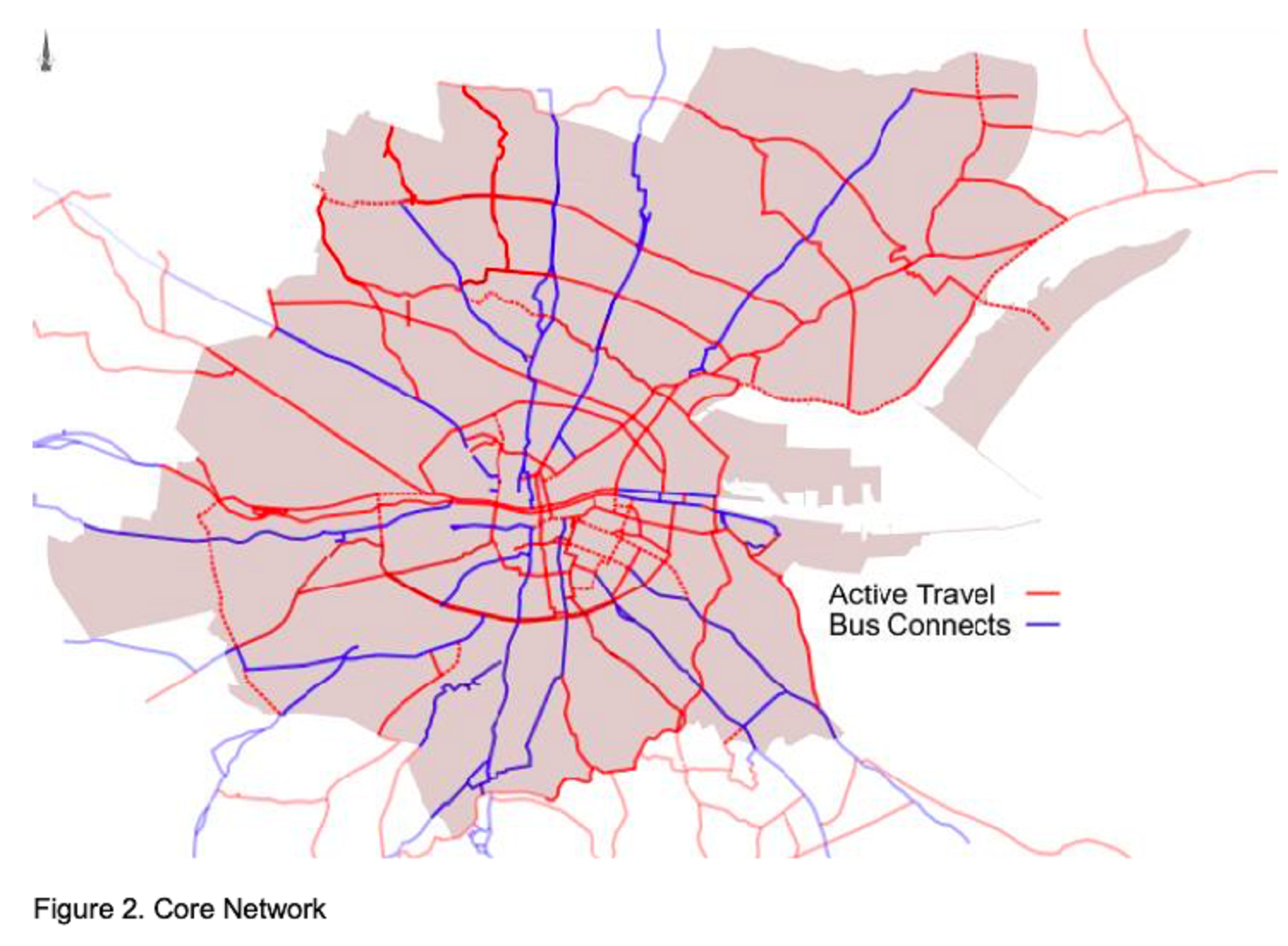Nobody caught illegally dumping yet by new north inner-city CCTV
But the scheme is a success, said a council official's report, as that shows the cameras are a deterrent.
These were some of the issues Dublin city councillors discussed at a recent meeting of their transport committee.

The council wants to ramp up fixed penalty notices after a successful first six months of a year-long pilot, said Dermot Stevenson, a parking enforcement officer, at last Wednesday’s meeting of the transport committee. “And hopefully it’ll only get better.”
The fixed penalty notices scheme, an on-the-spot fining system for parking violations, has so far covered its costs, according to a council report to the committee.
The council brought in €37,000, and paid out €35,000 for six supervisors from Dublin Street Parking Services (DSPS), the council’s contractor, to issue the fines, it says.
DSPS has been empowered to issue these fines since June 2021. At first, it was limited to fines for vehicles blocking paths or bus and cycle lanes.
In October, more fine-able offences were added. That was to help deal in particular with issues around construction sites and “code blacks”, says the report. A code black is when a vehicle is clamped but the owner chops off the clamp themselves.
DSPS issued 1,129 fines between 1 June 2021 and 25 January 2022, said the report. Forty-five percent were for parking a vehicle on a footpath, 22 percent for parking or stopping a vehicle on a clearway, and 19 percent for parking in a bus lane when it was in operation.
Fines were most frequently handed out on Hole in the Wall Road, in Donaghmede, with 61 violations making up 6 percent of the total. Second came Dame Street, with 51 violations, and third came Clarendon Street, with 42 violations, both in the city centre.
During the six months, 81 percent of those who were fined €40 paid their fine. “Which is extremely successful compared to other local authorities,” said Stevenson.
For those who don’t pay, the bill ratchets up over time. Those fined can then expect a court summons, which is handled internally by the council’s law department, the report says.
The council would like to increase the number of DSPS supervisors able to hand out fines, said Stevenson at the meeting. “We’re hoping that at this stage, we could significantly increase the number of fines which are being issued.”
On 1 February 2022, the fine was increased to €80. That extra money could make adding more staff cost-neutral, said Stevenson.
Carolyn Moore, a Green Party councillor, says it should be done quickly. “This is all about how efficiently and how quickly we can issue these fines and carry out enforcement. And therein lies the power of good enforcement.”
Stevenson said it would take time to discuss with DSPS how more staff could be brought in. Hopefully by June of this year, he said.
Mannix Flynn, an independent councillor, said that the council should introduce speed and parking cameras to send fines automatically.
Stevenson said that is outside of the fixed-penalty notices scheme. But “it’s not something I’m against looking at”, he said.
Janet Horner, a Green Party councillor, asked whether the council was engaging with residential areas that suffer from widespread footpath parking.
It’s a fire hazard, said Christy Burke, an independent councillor. And, “you can see waste management services can’t get through in the mornings because the cars are parked on each side of a pathway of a road.”
Anne Feeney, a Fine Gael councillor said there should be tolerance for residential streets without space for parking until a solution is found. “It’s not possible in all cases to give them a parking permit for nearby roads or adjoining roads because capacity won’t allow it on those roads.”
Stevenson said DSPS tends to focus on black spots. “I think they do a very difficult job, in a very busy city,” he said. “We’re attempting to change a culture and an attitude here, and we’re doing it bit by bit.”
In March, the council plans to launch a web app that people can use to rate signal crossings around the city.
“We are seeking a deeper understanding of road users in interaction and their level of satisfaction with our traffic signal assets in the city,” said Jo Martin, a project manager from the council’s intelligent transport system division, at Wednesday’s meeting.
People will be able to tell the council if the green man takes too long to come around, if louder audio is needed – and to choose an emoji to describe their overall experiences of a signal, said Martin.
If they want to say more, they’ll be an expansive comment box too, she said. The council might use what they learn to better calibrate traffic signals, she says.
It’s not a place to mark faulty signals, said Martin. There is already a webpage to do that, she said.
Martin says those who can’t use the web app should use existing channels of communication with the council. “By phoning the traffic control centre or the customer service centre,” which is at 1800 29 39 49.
Janet Horner, a Green Party councillor, asked what would happen if submissions to the web app contradict the council’s objectives for better walking and cycling infrastructure in the city, such as drivers asking for shorter green man wait times.
The public are constantly consulted, surveyed and asked for feedback, she says, “If we are not committed to actually enacting on that, I think it is dangerous.”
The traffic control room hears from irate callers, or gets submissions about traffic faults, but there isn’t a place just for feedback, said Brendan O’Brien, the council’s executive engineer for traffic.
“There’s other comments there. It might be great if, you know, there was more space to wait at the pedestrian crossing, if the pedestrian crossing didn’t have guardrails,” he said.
“The reason for doing this is really to give people a bit of an opportunity to give some comments. It doesn’t mean that you know, we’re moving away from any of our stated aims or whatever,” he said.
The council last week launched its new active travel programme office, tasked with overseeing and implementing 160km of the city’s planned cycle network, pedestrian crossings, walking and cycling changes, and school zones.
It will eventually be a team of 20 staff, said Brendan O’Brien, the council’s executive engineer for traffic, at last Wednesday’s meeting of the council’s Traffic and Transport Strategic Policy Committee.
The team replaces the Covid Mobility Unit, which was responsible for engineering safer travel around the city during the pandemic.
Said O’Brien, at the meeting: “It’s good that we’ve actually now got the funding. As the staff numbers grow, we’ll certainly be able to deliver more than we have over the last particular period of time.”
O’Brien also gave councillors a presentation on what parts of the citywide cycle routes that the active travel programme office will be handling, and how it will build over time. “It’s not individual sections anymore. They fit into a network.”


Colm O’Rourke, a Fine Gael councillor, said it should be clearer how the council’s plans for its cycle network fit in with the National Transport Authority’s Greater Dublin Area Cycling Network Plan.
O’Brien says the future Greater Dublin Area Cycle Network plans, which link cycle networks across the four Dublin local authorities, are still under review by the NTA.
Colm Ryder, of the Dublin Cycling Campaign, said he’s happy to see a logical approach to the cycle network.
Said Christy Burke, an independent councillor: “I wish you well, with your project it’s a very very, very exciting one, in particular the Safe Schools project there is heartening to see.”
Gary Kearney, a disability advocate, said that none of the designs are vulnerable-pedestrian friendly. “Nowhere was there anything about people with limited mobility.”
Said Kearney: “They’re just ignoring it constantly, I’m shouting down a hole at the moment.”
O’Brien said the report was about the core cycle network, which should be open to as many as possible, including young, old and disabled cyclists.
The programme office is also focused on walking plans, he said, and an “increase in the number of safe and accessible-to-all crossing routes”.
The office will also put in more pedestrian crossings this year than was anticipated by councillors. The budget that the council passed late last year had €1 million which would pay for between four and twelve crossings. In late January, the NTA announced it was giving out more money for active travel, and Dublin City Council got €52,810,000, some of which will fund pedestrian crossings.
Said O’Brien at the meeting: “This year is kind of, pretty unprecedented in the number that we’re doing. We’re doing 29 new pedestrian crossings, we’re doing three controlled crossings.”